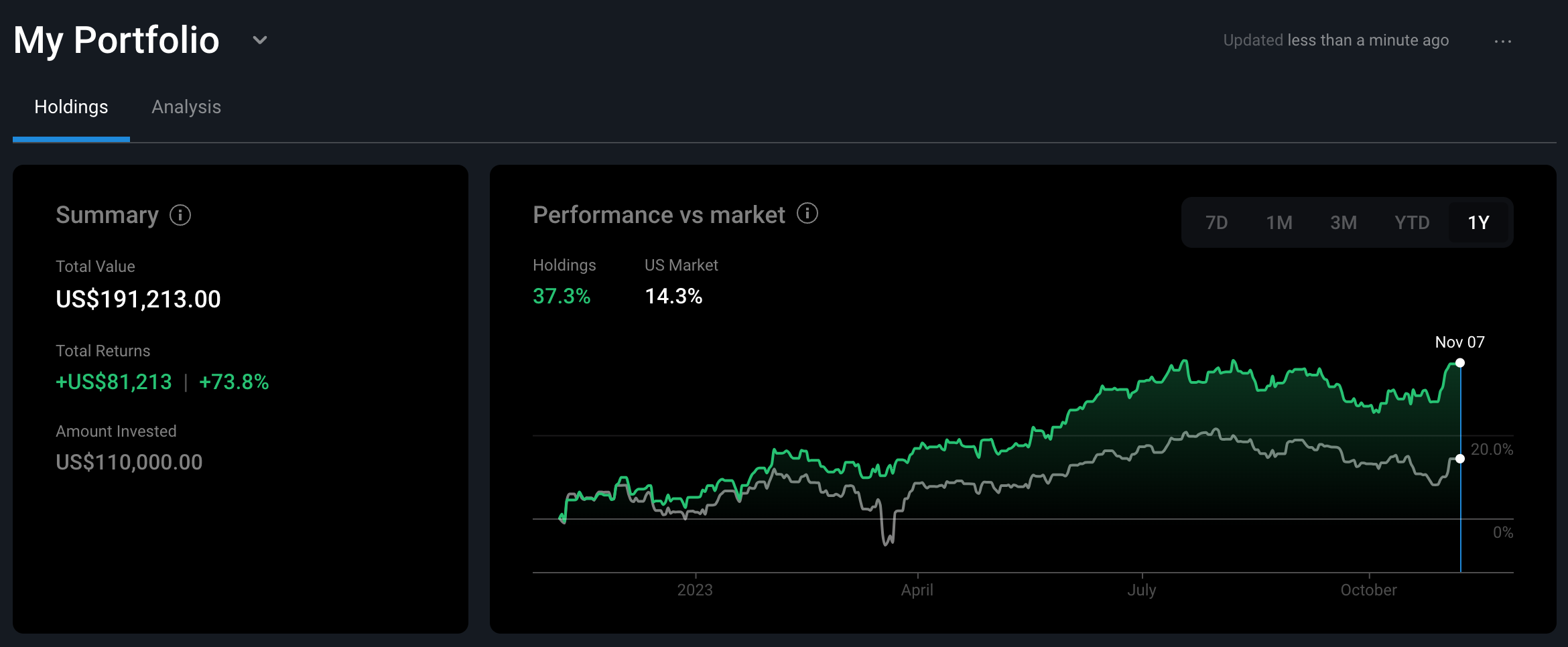When reviewing your portfolio’s returns performed over different time periods, be sure to review WHY it has performed like this.
This is the chance to check if your narratives are still valid, or have been invalidated, and if there are any opportunities or risks (where they’re now undervalued or overvalued).
Essentially, the question to ask yourself is: Is the market giving me an opportunity to buy more of a stock I believe is undervalued, or sell a stock I believe is overvalued?
Using the Returns chart at the top, compare your portfolio against the broader market, to see how the portfolio has performed over different time periods.

Then to see the reason why, go deeper and look at each individual stock in the table beneath it to review your individual holdings.
Here, ideally, you’ve got your narratives and a fair value estimate attached to each (reason for owning the stock and a valuation estimate), in the notes section.
After sorting the table based on your preference (i.e. most undervalued, most overvalued, market cap size, alphabetical, etc), then scroll through the “updates” tab on the right-hand side to see if there’s any new information since you last reviewed your portfolio that is relevant to your narrative and the value of the stock.
If there’s any relevant news or developments, then that’s the time to revisit your narrative and valuation and see if the new information validates or invalidates your existing narrative (or doesn’t have an impact at all).

If your narrative and valuation need updating, this is when you make the necessary changes (update your forecasts), and can then decide if you need to buy/add or trim/sell, or simply continue holding the position in this stock.
Doing this for each stock in your portfolio, as regularly as needed, at least once a month is a good way to start.
Once you’ve finished that, it’s time to review your portfolio allocation and position sizing.
Portfolio allocation is all about opportunity cost. Are your investments weighted according to what you want exposure to?
Under “Analysis”, you can review your portfolio’s exposure to different industries, stocks and geographies, and make sure your portfolio allocation matches your expectations.
Use the “Diversification across Industries” chart to make sure you’ve got balanced exposure to different industries that you want exposure to, especially those that you believe have long-term tailwinds ahead of them.

Next, beneath that chart, review your stocks on the individual level to make sure you’ve got appropriate position sizing to your best (most upside) and highest likelihood (most likely to occur) opportunities.
What’s your biggest holding? Is that your best idea that you have the most conviction in? What’s your smallest holding? Is that a lower conviction idea but with a lot of upside potential? Is it a stock you’ve completely forgotten about?

Make sure you know what you own, and why you own it. Where your holdings are weighted and sized to match your financial goals and objectives, risk profile, and your highest conviction ideas.
Next, geographies will be coming soon. Does this breakdown represent what you want exposure to from a global point of view? Is your biggest geographic exposure representative of what country you think has the best prospects? Is there an up-and-coming region you’d like more exposure to? Or a risky region that you'd like less exposure to? Review this chart to adjust accordingly.